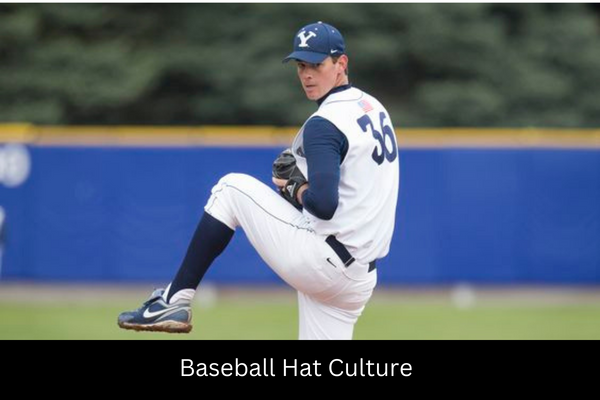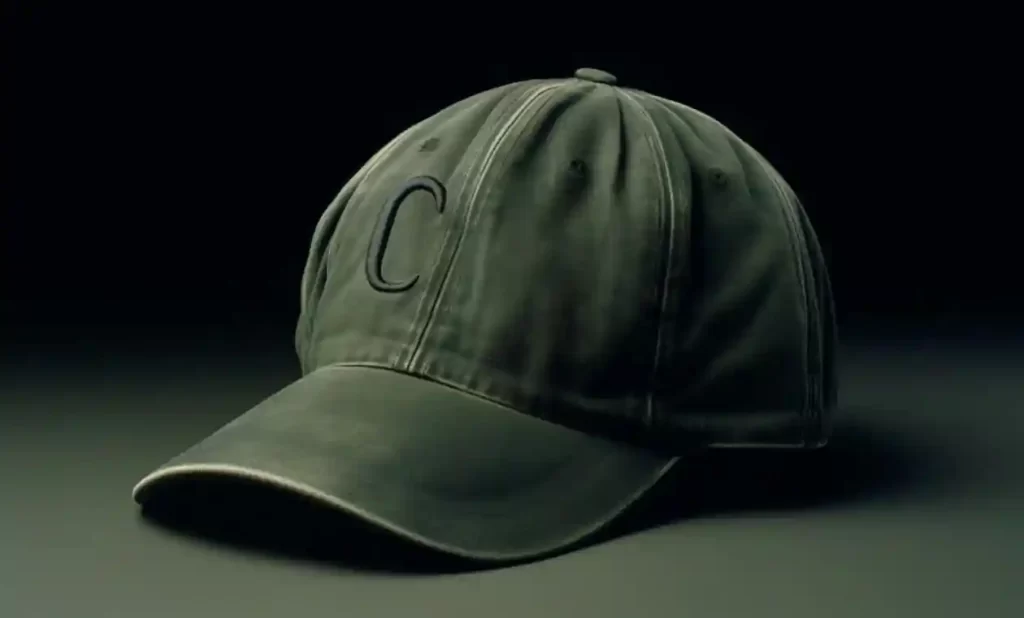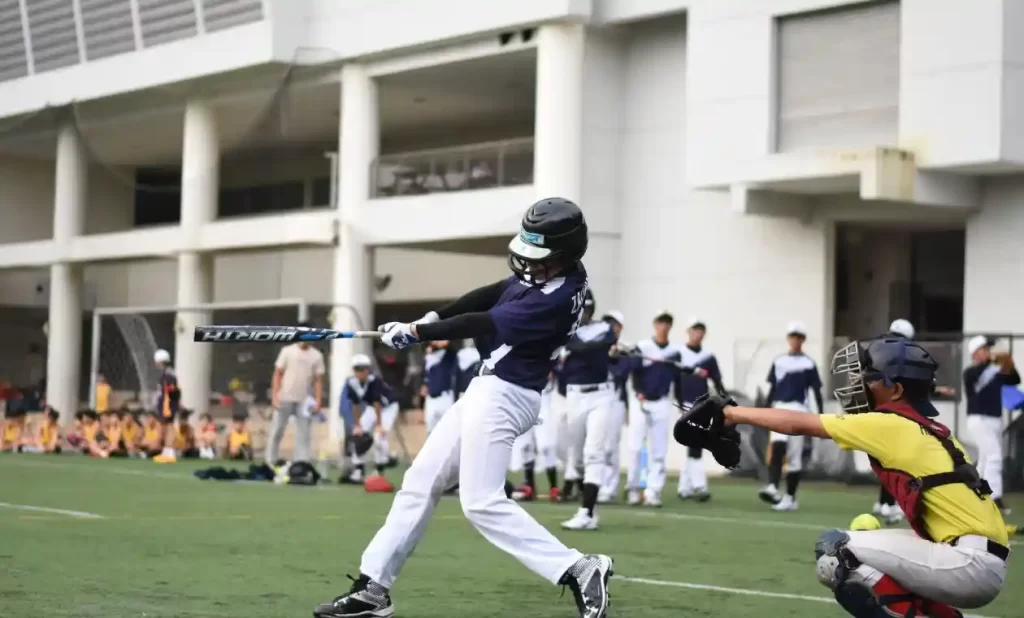 Image Credit-Pinterest
Image Credit-Pinterest
In the vibrant tapestry of America’s favorite pastime, the image of baseball players donning their signature hats stands as an enduring symbol. Beyond mere accessories, these hats weave a narrative that transcends the game itself. Picture the crack of the bat, the roar of the crowd, and the unmistakable sight of players, each with their team’s emblem proudly displayed on their hats.
The cultural significance of baseball hats extends far beyond the diamond. It’s a visual language that speaks of loyalty, tradition, and team spirit. As players step onto the field, their hats become a canvas, telling stories of victories, defeats, and the rich history of the game.
From the classic designs of yesteryear to the modern, sleek styles of today, each hat carries the weight of tradition while embracing the ever-evolving nature of the sport.
As we delve into the world of baseball hats, we embark on a journey that goes beyond mere headgear. These iconic caps encapsulate the ethos of baseball — a sport where every pitch, swing, and catch is steeped in legacy.
Join us as we unravel the tales behind the brims, exploring the deeper cultural currents that make baseball hats more than just stylish accessories. Let’s discover together why, in the realm of baseball, wearing a hat is not just a tradition; it’s a cherished connection to the heart and soul of the game.
The Evolution of Baseball Hats: A Timeless Journey Through Style and Tradition
From the dusty diamonds of baseball’s humble beginnings to the gleaming stadiums of the modern era, the journey of baseball hats reflects the dynamic evolution of both sport and style. In the early years, baseball hats were more pragmatic than fashionable, designed to shield players’ eyes from the sun. These rudimentary hats often resembled flat-brimmed caps, devoid of the elaborate logos and colors that adorn them today.
As baseball gained popularity in the late 19th century, so did the significance of team identity. The first stirrings of style emerged as teams began incorporating distinct colors and logos onto their hats. The evolution of baseball hats mirrored the changing landscape of the sport, transitioning from simple, functional headgear to iconic symbols of team pride.
In the mid-20th century, a seismic shift occurred with the introduction of the “snapback” design, allowing for a customizable fit. This innovation not only enhanced comfort but also became a canvas for artistic expression. Teams embraced bold logos, vibrant colors, and unique designs, turning baseball hats into sought-after fashion statements.
The latter half of the 20th century witnessed the rise of the fitted cap, a sleeker, more tailored version that revolutionized baseball hat design. The shift from wool to synthetic materials further enhanced durability and breathability, catering to the comfort of players and fans alike.
In the 21st century, technology has played a pivotal role in shaping baseball hat evolution. Advanced materials, moisture-wicking fabrics, and innovative construction techniques have elevated both performance and style. The emergence of niche collections, limited editions, and collaborations with fashion designers have transformed baseball hats into coveted items beyond the ballpark.
From the classic elegance of the early 1900s to the cutting-edge designs of today, baseball hats have weathered the tides of time, adapting to the spirit of each era. The evolution of these iconic headpieces is not just a testament to changing fashion trends but also a reflection of the enduring legacy and cultural resonance of America’s favorite pastime.
As we explore the diverse chapters of baseball hat history, we witness more than just a change in design; we witness the threads that weave together the tapestry of baseball’s rich heritage.
Functionality and Purpose: Unveiling the Practical Brilliance of Baseball Hats
Beyond their aesthetic appeal, baseball hats serve a vital role on the diamond, offering players a marriage of form and function that extends well beyond the realm of fashion. As we delve into the practical reasons behind the ubiquitous presence of baseball hats, we uncover a world where style seamlessly intertwines with necessity.
At the heart of the functionality lies the primary purpose of shielding players from the relentless sun that often bathes the baseball field. From the open fields of sandlot games to the grandeur of Major League Baseball stadiums, the sun’s glare can pose a formidable challenge for players attempting to catch fly balls or make precision throws. Baseball hats, with their wide brims, act as a shield, providing essential shade to maintain optimal visibility and focus.
Moreover, these hats play a crucial role in protecting players from environmental elements. As the crack of the bat echoes across the field, players are exposed to more than just the sun’s rays.
The ever-changing weather conditions, from the scorching heat of summer to the unpredictable drizzles of spring, demand a versatile and protective head covering. Baseball hats, often crafted from durable materials resistant to the elements, offer a reliable defense against rain, wind, and even the occasional airborne debris.
In the pursuit of excellence on the field, the need for optimal visibility is paramount. Baseball hats, with their carefully designed brims, shield players’ eyes from the glare of stadium lights, ensuring that every play is executed with precision. The importance of clear vision extends to both offense and defense, making the baseball hat not just an accessory but an integral part of the player’s toolkit.
Beyond the practical considerations, these hats become a symbol of focus and determination. The act of adjusting one’s hat before a pitch or a bat swing is a ritual that signifies readiness, a subtle acknowledgment of the role the hat plays in maintaining concentration amidst the inherent challenges of the game.
In essence, the functionality and purpose of baseball hats transcend mere fashion; they are a testament to the thoughtful design that enhances player performance and comfort. As we witness players don their hats before each game, we witness more than just a style choice — we witness a silent acknowledgment of the invaluable role these iconic headpieces play in the intricate dance between athlete and environment on the baseball field.
Symbolism in Baseball Hats: Beyond Fashion, a Badge of Team Allegiance
Within the brimmed confines of a baseball hat lies a profound emblem of team identity and pride, transcending its role as a mere accessory. As we unravel the layers of symbolism woven into the fabric of these iconic headpieces, we embark on a journey that goes beyond fashion, delving into the very essence of what it means to be a part of a baseball community.
At its core, a baseball hat is not just a canvas for logos and colors; it’s a proclamation of allegiance. The carefully embroidered team insignias, vibrant hues, and distinct designs tell a story of tradition, triumphs, and the unwavering loyalty of fans. Whether it’s the iconic ‘NY’ of the New York Yankees or the leaping tiger of the Detroit Tigers, these symbols are not arbitrary; they are sacred emblems that connect fans to a rich legacy.
The symbolism extends beyond the diamond, seeping into the psyche of players and fans alike. For players, donning their team’s hat is a ritualistic act that symbolizes belonging and unity. It’s a tangible expression of shared goals and the pursuit of victory under a common banner. The moment a player steps onto the field, the hat becomes a focal point, a symbol of the team’s collective spirit.
For fans, wearing a baseball hat is more than just a sartorial choice; it’s an emotional investment. The act of choosing and proudly wearing a team’s hat is an outward declaration of affinity, a visible bond that unites individuals into a larger community. It’s an acknowledgment of shared victories and defeats, creating a sense of camaraderie that transcends geographical boundaries.
The psychology behind fans wearing baseball hats delves into a deep sense of belonging. Studies suggest that sports apparel serves as a form of “social identity theory,” where individuals align themselves with a group, deriving a sense of self-worth and identity from their association. The hat becomes a visible marker of this social identity, fostering a shared sense of purpose and community among fans.
In the vast tapestry of baseball culture, the symbolism within these hats is a living testament to the power of sport in shaping collective identities. Beyond the stitching and brims, baseball hats become a tangible expression of pride, a symbol that unites players and fans in a shared narrative of triumph, legacy, and unwavering loyalty.
Baseball Hats Across Sports: Beyond the Diamond, a Style Staple
The iconic silhouette of a baseball-style hat transcends the confines of the baseball diamond, making its mark across a myriad of sports. From football to basketball, the influence of this classic headwear extends far beyond the world of home runs and strikeouts. Let’s explore why baseball-style hats have become a universal style statement and the subtle nuances that distinguish hat traditions across different sports.
One of the primary reasons baseball-style hats have permeated other sports lies in their versatile design. The curved brim serves a functional purpose, offering protection from the sun and aiding visibility — attributes that are beneficial in various athletic endeavors. This adaptability has made baseball hats a popular choice not just for baseball players but also athletes in sports like golf, tennis, and even skateboarding.
In football, for example, players on the sidelines often don baseball-style hats during practices and downtime. The hat, while not part of the official uniform during play, becomes a symbol of team unity and casual camaraderie. Similarly, in basketball, coaches and players frequently sport baseball-style hats during warm-ups, contributing to the overall team aesthetic.
While the design remains consistent, the symbolism and traditions associated with baseball-style hats can vary across sports. In football, the hat may serve as a casual accessory, worn to represent team pride during off-field moments. In contrast, baseball players often adhere to superstitions and rituals related to their hats, flipping them inside out during winning streaks or wearing them backward for good luck.
The subtle differences and shared aesthetics create a fascinating tapestry of hat traditions across sports. While the baseball-style hat may serve a practical purpose universally, its interpretation and significance are uniquely woven into the cultural fabric of each sport. As we witness athletes donning these hats beyond the baseball diamond, we glimpse a shared appreciation for a timeless style that seamlessly blends functionality with fashion, creating a thread that ties diverse sports together in sartorial unity.
Unconventional Styles: Inside Out — The Cultural Canvas of Baseball Hats
In the dynamic world of baseball fashion, few styles captivate the imagination as much as the unconventional act of wearing hats inside out. Beyond the stitches and seams, this seemingly rebellious choice unveils a cultural canvas, woven with tradition, superstition, and individual expression.
The practice of flipping a baseball hat inside out is a ritual that transcends the boundaries of the baseball diamond. While it might appear whimsical, it carries profound cultural and individual significance.
One prevalent reason stems from the realm of superstition — a domain where players believe that altering the orientation of their hats can bring about a change in fortune. Whether breaking a losing streak or amplifying a winning streak, the inside-out hat becomes a talisman, a visual cue for a shift in destiny.
Culturally, the inside-out hat is also emblematic of camaraderie and shared rituals within a team. When one player adopts this unconventional style, it often becomes contagious, spreading through the dugout like wildfire. It fosters a sense of unity and shared belief, where players collectively embrace the power of superstition to shape the outcome of a game.
Individual reasons for wearing hats inside out further enrich this cultural narrative. For some players, it’s a personal quirk, a way to stand out amidst the sea of uniformity. It becomes a statement of individualism within the collective identity of the team. This act of defiance against traditional norms reflects the dynamic relationship between player and uniform, where personal expression meets the rich tapestry of baseball tradition.
As we witness the inside-out hat trend permeate the baseball culture, we glimpse a vibrant tradition that transcends the boundaries of reason. It’s a visual spectacle that goes beyond the stitches and brims, offering a glimpse into the intricate dance between superstition, camaraderie, and individuality that defines the cultural landscape of baseball and its enduring love affair with the iconic headpiece.
Conclusion
In the grand tapestry of baseball, the humble hat emerges as more than a mere accessory; it is a living emblem of tradition, unity, and personal expression. From the dusty sandlots to the colossal stadiums, the evolution of baseball hats mirrors the evolution of the game itself — a journey marked by innovation, style, and unwavering team pride.
As we conclude this exploration, let’s tip our hats to the myriad stories woven into the brims — from inside-out superstitions to the timeless symbols of team identity. Let each curve and stitch remind us that, in the world of baseball, every hat tells a story worth cherishing.
So, next time you don your favorite team’s cap, let it be more than just a piece of fabric; let it be a salute to the legacy, camaraderie, and everlasting love for America’s favorite pastime.
Cheers to the hat — a crown of the diamond and a symbol of the enduring spirit that unites fans and players alike. Let the story beneath the brim continue to unfold with each pitch, swing, and triumph, reminding us that, in the world of baseball, the real magic lies not just in the game but in the cherished traditions that adorn it.
How much did you like this Pitch Perfect: Deciding Between 4-Seam and 2-Seam Fastballs, please share your view in the comment box, also share this blog with your friends on Social Media so they can also enjoy this blogs for more blogs visit baseballpropicks.com
Related Article –

Meet Daniel Anderson, the heart and soul behind Baseball Pro Picks. At 49, Daniel’s life has revolved around baseball, a passion that’s as strong today as it was when he first fell in love with the game. Living in the USA, Daniel has dedicated countless hours to watching, analyzing, and understanding every pitch, hit, and home run, making almost no game missed. His deep-rooted love for the sport is matched only by his commitment to sharing insightful, expert analysis with fellow baseball enthusiasts. With decades of experience and a keen eye for the game’s nuances, Daniel brings a unique perspective that enriches Baseball Pro Picks. Trust Daniel to guide you through the intricacies of baseball with the authority and trustworthiness of a true aficionado.












